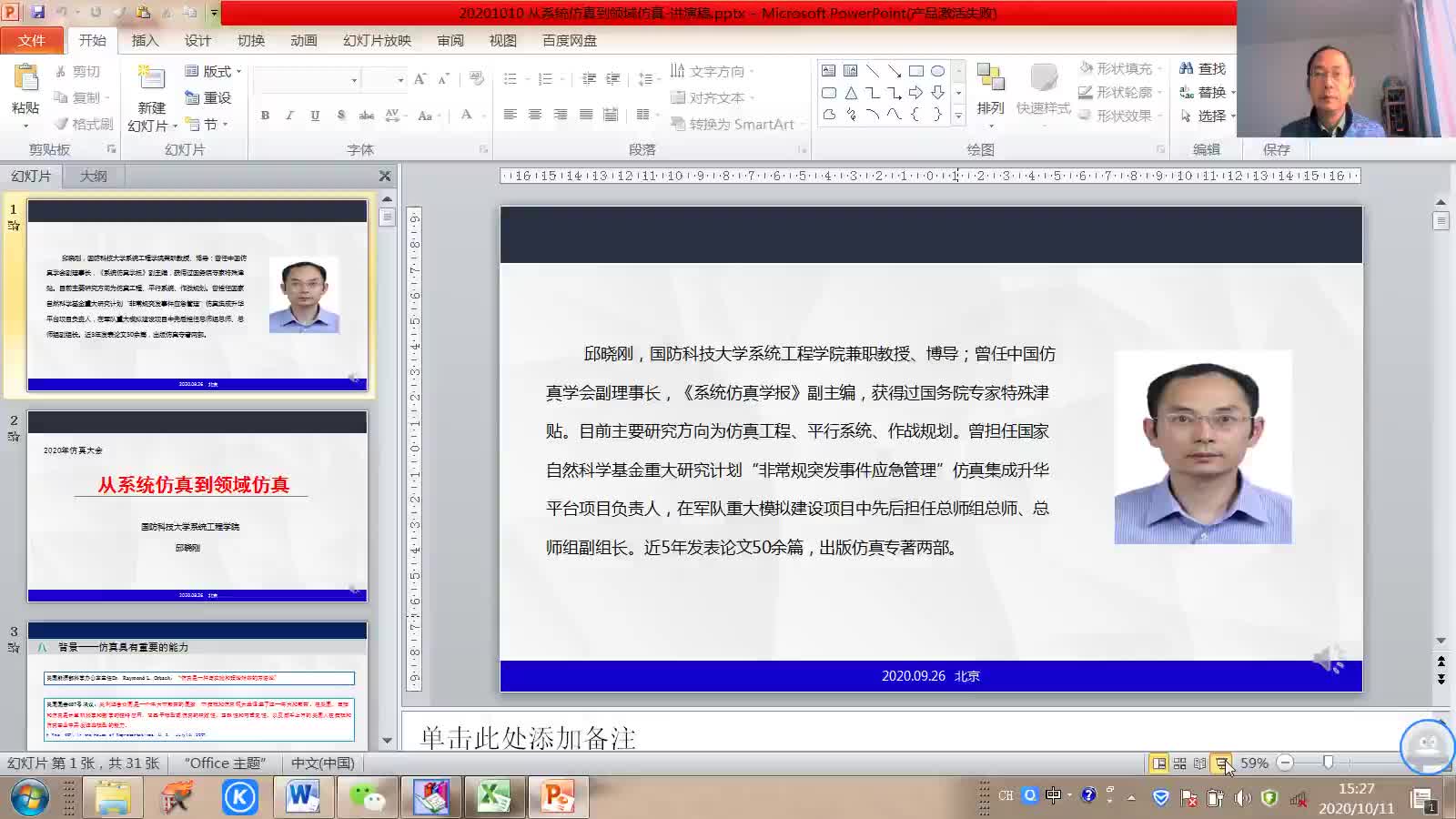Search scope:
排序: Display mode:
Modeling, simulation, and prediction of global energy indices: a differential approach
Stephen Ndubuisi NNAMCHI, Onyinyechi Adanma NNAMCHI, Janice Desire BUSINGYE, Maxwell Azubuike IJOMAH, Philip Ikechi OBASI
Frontiers in Energy 2022, Volume 16, Issue 2, Pages 375-392 doi: 10.1007/s11708-021-0723-6
Keywords: energy indices differential model normalization simulation inflation/deflation predictive factor andprediction rate
Chenglong ZHANG,Mo LI,Ping GUO
Frontiers of Agricultural Science and Engineering 2017, Volume 4, Issue 1, Pages 81-96 doi: 10.15302/J-FASE-2016112
Keywords: Monte Carlo nonstationary trend detection streamflow prediction decomposition and ensemble Yingluoxia
WANG Hongyan, RUI Qiang, HE Xiaojun
Frontiers of Mechanical Engineering 2007, Volume 2, Issue 1, Pages 68-71 doi: 10.1007/s11465-007-0011-0
Keywords: dynamic simulation simulation software allusion influential material
Anan Wang,Helen H. Lou,Daniel Chen,Anfeng Yu,Wenyi Dang,Xianchang Li,Christopher Martin,Vijaya Damodara,Ajit Patki
Frontiers of Chemical Science and Engineering 2016, Volume 10, Issue 4, Pages 459-471 doi: 10.1007/s11705-016-1594-y
Keywords: flare soot emission combustion mechanism CFD simulation
Study on Reliability Prediction and Simulation for Mechanical System Undergoing Maintenance
Huang Liangpei,Yin Xiyun and Yue Wenhui
Strategic Study of CAE 2007, Volume 9, Issue 12, Pages 69-74
Keywords: reassembly and maintenance reliability prediction age distribution failure rate
Ahmad SHARAFATI, H. NADERPOUR, Sinan Q. SALIH, E. ONYARI, Zaher Mundher YASEEN
Frontiers of Structural and Civil Engineering 2021, Volume 15, Issue 1, Pages 61-79 doi: 10.1007/s11709-020-0684-6
Keywords: foamed concrete adaptive neuro fuzzy inference system nature-inspired algorithms prediction of compressive
Qian-Qing ZHANG, Shan-Wei LIU, Ruo-Feng FENG, Jian-Gu QIAN, Chun-Yu CUI
Frontiers of Structural and Civil Engineering 2020, Volume 14, Issue 4, Pages 961-982 doi: 10.1007/s11709-020-0632-5
Keywords: numerical simulation non-uniformly arranged pile groups differential settlement pile-soil interaction
Spatial prediction of soil contamination based on machine learning: a review
Frontiers of Environmental Science & Engineering 2023, Volume 17, Issue 8, doi: 10.1007/s11783-023-1693-1
● A review of machine learning (ML) for spatial prediction of soil
Keywords: Soil contamination Machine learning Prediction Spatial distribution
Meteorological technology application and development in wind energy resources utilization
Song Lili,Zhou Rongwei,Yang Zhenbin,Zhu Rong,
Strategic Study of CAE 2012, Volume 14, Issue 9, Pages 96-101
Keywords: wind power resource meteorological technology observation and assessment simulation and prediction
Frontiers of Medicine 2022, Volume 16, Issue 3, Pages 496-506 doi: 10.1007/s11684-021-0828-7
Keywords: XGBoost deep neural network healthcare risk prediction
Position-varying surface roughness prediction method considering compensated acceleration in milling
Frontiers of Mechanical Engineering 2021, Volume 16, Issue 4, Pages 855-867 doi: 10.1007/s11465-021-0649-z
Keywords: surface roughness prediction compensated acceleration milling thin-walled workpiece
Improved prediction of pile bending moment and deflection due to adjacent braced excavation
Frontiers of Structural and Civil Engineering doi: 10.1007/s11709-023-0961-2
Keywords: pile responses excavation prediction deflection bending moments
Reliability prediction and its validation for nuclear power units in service
Jinyuan SHI,Yong WANG
Frontiers in Energy 2016, Volume 10, Issue 4, Pages 479-488 doi: 10.1007/s11708-016-0425-7
Keywords: nuclear power units in service reliability reliability prediction equivalent availability factors

The extension of simulation —— from system simulation to domain simulation
28 Nov 2020
Keywords: 仿真技术
Trend prediction technology of condition maintenance for large water injection units
Xiaoli XU, Sanpeng DENG
Frontiers of Mechanical Engineering 2010, Volume 5, Issue 2, Pages 171-175 doi: 10.1007/s11465-009-0091-0
Keywords: water injection units condition-based maintenance trend prediction
Title Author Date Type Operation
Modeling, simulation, and prediction of global energy indices: a differential approach
Stephen Ndubuisi NNAMCHI, Onyinyechi Adanma NNAMCHI, Janice Desire BUSINGYE, Maxwell Azubuike IJOMAH, Philip Ikechi OBASI
Journal Article
Trend detection and stochastic simulation prediction of streamflow at Yingluoxia hydrological station
Chenglong ZHANG,Mo LI,Ping GUO
Journal Article
The prediction technology study of fatigue life for key parts of a tracked vehicle’s suspension system
WANG Hongyan, RUI Qiang, HE Xiaojun
Journal Article
Combustion mechanism development and CFD simulation for the prediction of soot emission during flaring
Anan Wang,Helen H. Lou,Daniel Chen,Anfeng Yu,Wenyi Dang,Xianchang Li,Christopher Martin,Vijaya Damodara,Ajit Patki
Journal Article
Study on Reliability Prediction and Simulation for Mechanical System Undergoing Maintenance
Huang Liangpei,Yin Xiyun and Yue Wenhui
Journal Article
Simulation of foamed concrete compressive strength prediction using adaptive neuro-fuzzy inference system
Ahmad SHARAFATI, H. NADERPOUR, Sinan Q. SALIH, E. ONYARI, Zaher Mundher YASEEN
Journal Article
Finite element prediction on the response of non-uniformly arranged pile groups considering progressive
Qian-Qing ZHANG, Shan-Wei LIU, Ruo-Feng FENG, Jian-Gu QIAN, Chun-Yu CUI
Journal Article
Meteorological technology application and development in wind energy resources utilization
Song Lili,Zhou Rongwei,Yang Zhenbin,Zhu Rong,
Journal Article
Hybrid deep learning model for risk prediction of fracture in patients with diabetes and osteoporosis
Journal Article
Position-varying surface roughness prediction method considering compensated acceleration in milling
Journal Article
Improved prediction of pile bending moment and deflection due to adjacent braced excavation
Journal Article
Reliability prediction and its validation for nuclear power units in service
Jinyuan SHI,Yong WANG
Journal Article
The extension of simulation —— from system simulation to domain simulation
28 Nov 2020
Conference Videos








